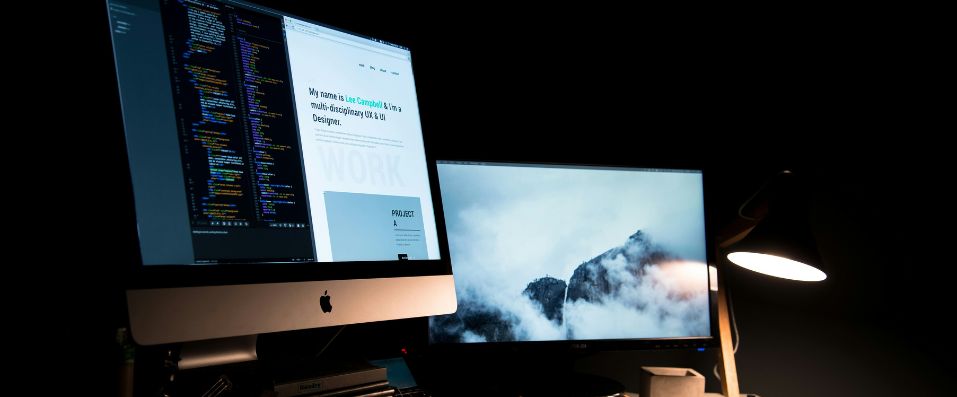The Impact of Technology on User Experience Design
September 30, 2025 • César Daniel Barreto

Technology keeps slipping into the way we design and interact with digital products—it’s not just about sleek visuals anymore. The shift feels pretty clear: design has moved from being mostly decorative to something centered on people, where usability and satisfaction take the lead.
What used to be described as a mix of art and science is now tangled up with rapid advances in tech. Some argue this combination gives designers and businesses the tools they need to keep up with ever-shifting expectations, though it can also create pressure to move faster than feels sustainable.
Technology keeps slipping deeper into the way we design and interact with digital products. It’s not really about sleek visuals anymore. The shift is hard to miss: design has moved from being mostly decorative to something rooted in people—their needs, their frustrations, their satisfaction.
What was once a tidy blend of art and science now feels tangled up with rapid advances in tech. Some say this mix arms designers and businesses with what they need to keep up with rising expectations. Others would argue it just adds pressure, speeding up cycles that already move too fast.
The Role of User Research
Data—whether it’s numbers on a spreadsheet or stories from actual users—pulls designers closer to what people want. Or, well, what they think they want at a given time. Tools today deliver feedback almost instantly, which can be thrilling and exhausting in equal measure. Ideally, this kind of research helps products land more cleanly with their audiences.
As user research evolves, employing UI/UX design agencies can harness machine learning and AI to predict user behaviors and trends, informing more strategic design decisions. Agencies lean heavily on AI and machine learning now, trying to predict behaviors, though anyone watching closely knows predictions rarely feel bulletproof. Still, with enough insight, designers can craft experiences that are not only functional but also welcoming. Pairing technology with research gives UX a firmer base, but it also raises doubts about reliability that can’t be ignored.
The Influence of Prototyping and Iteration
Prototyping used to swallow time and resources. With today’s tools, what once took weeks can be mocked up in hours. That speed means designers can throw ideas into the world quickly, gather reactions, and adjust right away. Before long, it becomes a loop—test, tweak, repeat—sometimes endlessly. The rhythm helps keep user needs in sight rather than as an afterthought.
Collaboration tools layer onto this, letting remote teams weigh in at different points, smoothing out some steps and, at times, sparking unexpected ideas. But there’s a trade-off: the closer a concept gets refined, the easier it is to get stuck circling revisions, never quite deciding when it’s done.
The Impact of Artificial Intelligence on Personalization
AI is reshaping personalization, though some of the promises still feel inflated. These systems can shift recommendations or content based on behavior, nudging users toward what seems tailored to them. When it works, the effect often deepens loyalty and satisfaction.
Retailers, for example, already use AI to recommend products after a single click or purchase. Machine learning keeps trying to keep pace as preferences change, hinting at finer adjustments in the future. The possibilities seem wide open—but also uncertain, especially when personalization edges too close to feeling invasive.
The Role of Augmented and Virtual Reality in UX Design
AR and VR open doors to experiences that, not long ago, felt out of reach. Augmented reality lets people preview products in their own space, while VR carries them into fully immersive worlds. Both bring new design challenges—comfort, accessibility, even motion fatigue. As these technologies become more familiar, they push designers to rethink interaction itself. And once users adjust to these immersive layers, expectations for ordinary digital interfaces rise too, nudging traditional designs to evolve.
Responsive Design and Multi-Device Optimization
With devices multiplying everywhere, responsive design isn’t optional—it’s the baseline. People expect websites and apps to adapt without a hiccup, whether they’re on a phone, a tablet, or a giant monitor.
Advances in layout tools make that flexibility easier. Still, a site that lags or feels clumsy can frustrate quickly; slow-loading sites in particular drive users away and often lead to higher bounce rates. Building responsive principles into the process doesn’t just improve usability; it makes the experience more likely to stick.
The Accessibility in Modern Design
Designers are noticing, more than before, the subtle barriers that keep people out. Inclusive design makes it possible for those with disabilities to engage more comfortably, and almost always, the changes spill over to benefit everyone else.
Accessibility standards aren’t simply about compliance; they broaden reach and show that a company is paying attention. Businesses that commit to it often uncover new markets. Users, meanwhile, sense when design feels genuinely considerate. It’s not just a legal requirement—it’s a foundation for trust.
Data Security and Privacy Considerations
As technology seeps into daily life, unease about data—where it goes, who controls it—keeps growing. Trust here doesn’t come automatically; it has to be built. Clear policies, plain choices, options you can actually see—these details may look small, but they end up carrying a lot of weight. Encryption, secure systems, yes, they matter, though the feel of the interaction often matters just as much.
When the design comes off as murky or overcomplicated, people hesitate. And if a company shrugs at privacy, the damage usually shows up faster than they expect. Addressing security early doesn’t solve everything, but it does take the edge off people’s worries and hints at a basic respect for their data.

As for user experience design—it doesn’t stay still. It shifts with the tech, bending to whatever new habits or tools appear. Data, research, experiments keep nudging it forward, though the outcomes can be messy, sometimes unexpected.
What feels fairly certain is that people will keep wanting interactions that are easier, more thoughtful, less clunky. Designers, whether they like it or not, will have to adjust, maybe even reinvent themselves, again and again. And maybe that’s the point—it’s never really finished.

César Daniel Barreto
César Daniel Barreto is an esteemed cybersecurity writer and expert, known for his in-depth knowledge and ability to simplify complex cyber security topics. With extensive experience in network security and data protection, he regularly contributes insightful articles and analysis on the latest cybersecurity trends, educating both professionals and the public.